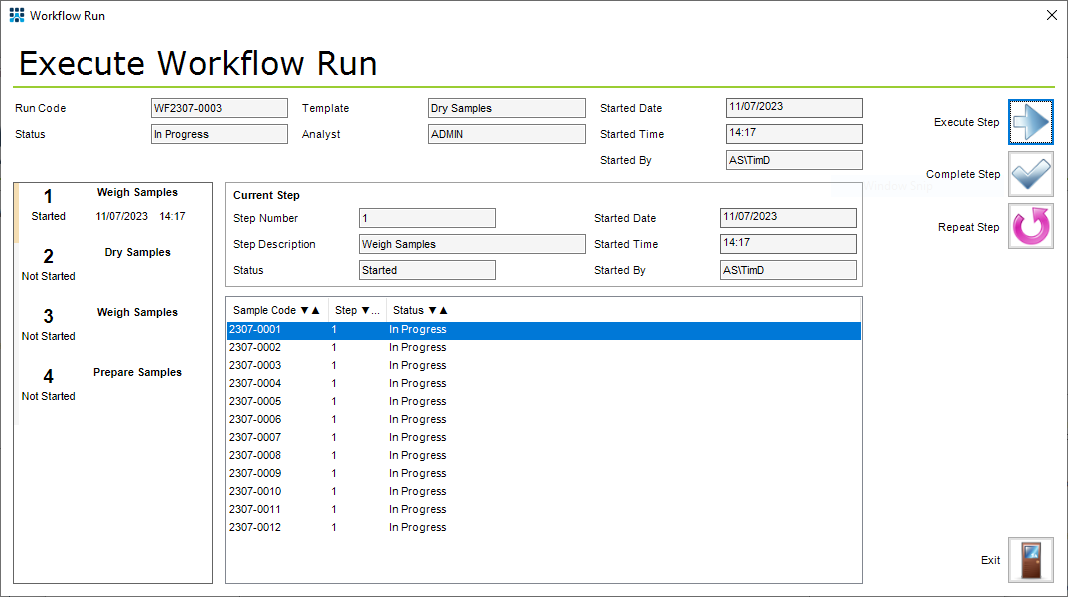Significant Developments for Autoscribe’s Laboratory Execution System (LES) Available in 2Q23 Matrix Gemini LIMS Starter Systems Release
Autoscribe Informatics has introduced significant developments for its Laboratory Execution System (LES) in the newest version of the Matrix Gemini LIMS Starter Systems, released in 2Q23. An LES can guide laboratory staff through a defined workflow or Standard Operating Procedure to help ensure that the correct preparation and test workflow steps are followed, and therefore ensure the validity of the end results. Flexibility must be built into the LES to ensure a broad range of workflow types and specific functions can be easily supported.
A truly flexible LES allows workflow steps to be defined for any required scenario within the laboratory, and supports the laboratory functions including, for example, method specific sample preparation, instrument and reagent recording, result entry and sample review and approval.

Example of Workflow Step Execution in the Matrix Laboratory Execution System
Workflows may be defined with an unlimited number of steps, with each step having one or more actions associated with it. For example, the preparation steps for a particular sample type may require samples to be weighed, dried, and weighed again and, providing the percentage weight lost meets pre-defined criteria, releasing them for further processing and testing. Each execution step opens the appropriate screens, such as a result entry screen to capture the weights, and automatic actions such as calculating the percentage weight loss can be called. In Matrix Gemini, the required screens can themselves be configured using the built-in Matrix Configuration Tools. This methodology allows users to build workflow steps which can be reused as required. The resulting LES workflows ensure staff follow the same standard procedures, without any variance, on every occasion.
“Laboratory Execution Systems (LES) are often costly to setup and maintain within a Laboratory Information Management System because each workflow is a specific, often bespoke, method for that laboratory. Small nuances, and industry or organizational specific preferences, mean that LES can be difficult to define, build and support”, said Simon Wood, Product Manager at Autoscribe Informatics. “Matrix Gemini LIMS solves this problem by using its built-in configuration tools to define the workflow steps and the overall workflow. This allows us to support a wide variety of industry specific methods without resorting to programmed software solutions. LES are particularly important in highly regulated laboratories, where executing the same testing regime, in the same way, every time, is so important.”
















